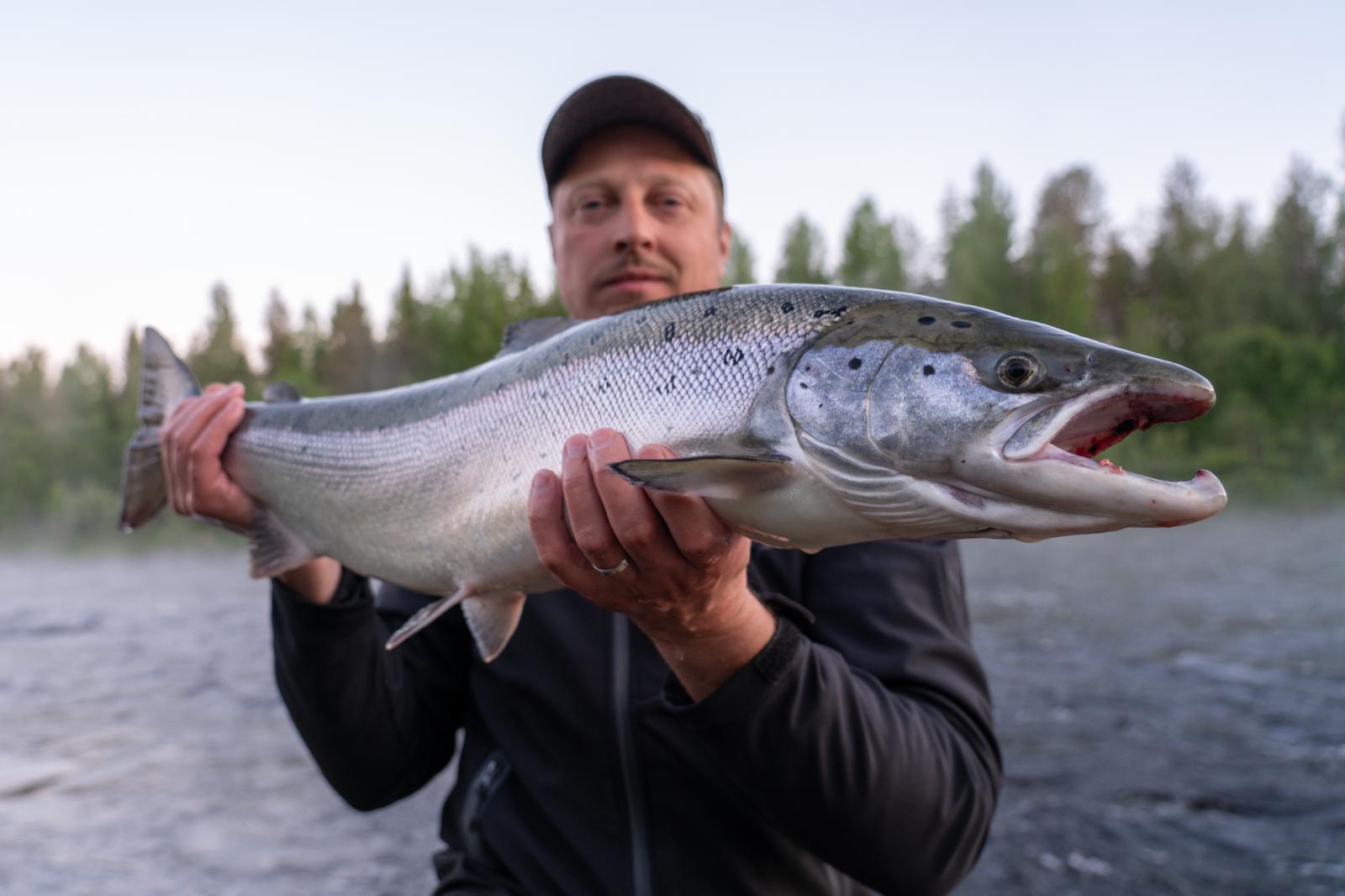Identifying salmons gender
It would be great if you could inform us the gender of the salmon you let go after fishing it up when you let us know about your catch-data to us for traditional Lapinkoski and Lohiranta salmon-competition.
However, identifying the gender of the salmon that has just swam up the river is not an easy task. On this page we have collected a small summary of how to identify the gender of a salmon.

You can determine the gender of the salmon by visually observing it the way, where you compare the length of the head to its torso and the length and the shape of the lower and upper jaw. On males you can usually see a hook on the lower jaw, which starts to develop on them during mid-summer and at the end of the summer you can see this hook quite clearly. Also, it has been noticed that males have a smaller muzzle than the females do. Because of this, males have a bigger head relative to their torso than females, which have a triangle-shaped muzzle when viewed from up.
Researchers from Natural Resources Center has used this outer morphology to catch mother fishes near the river mouth with a success. Gender of these mother fishes was confirmed on autumn in the spawning season, and the amount of wrongly determined gender of these fishes were under 5 precent (source: 2004 – Jokikokko – The timing sex and age composition of the wild and reared Atlantic salmon ascending)
Determining the gender is based on observing the outer morphology, and you can do this visually. Generally, there are some differences between sexes that can be seen in the outer appearance, and that can help determining the gender of the salmon.:
Structure of the head and the jaw:
- Males can have much stronger and hook-like jaw structure as well as bigger heads.
- Females can have a slightly smaller head, and the structure of the jaw can be a bit more refined.
Shape of the body:
- Males can have much stronger and massive essence physically.
- Females can have a slightly slimmer and the shape of the body be more streamlined.
Fins:
- On males the fins, especially the fins under the stomach and the anal fin can be larger and stronger than on female salmon.
- On females the fins can be slightly smaller and more refined.
Colour variations:
- Males can get some colour variations when preparing for the spawning season, for example the darker colour and hook-like spikes on jaw. At the end of the summer determining the gender of the salmon becomes much easier.